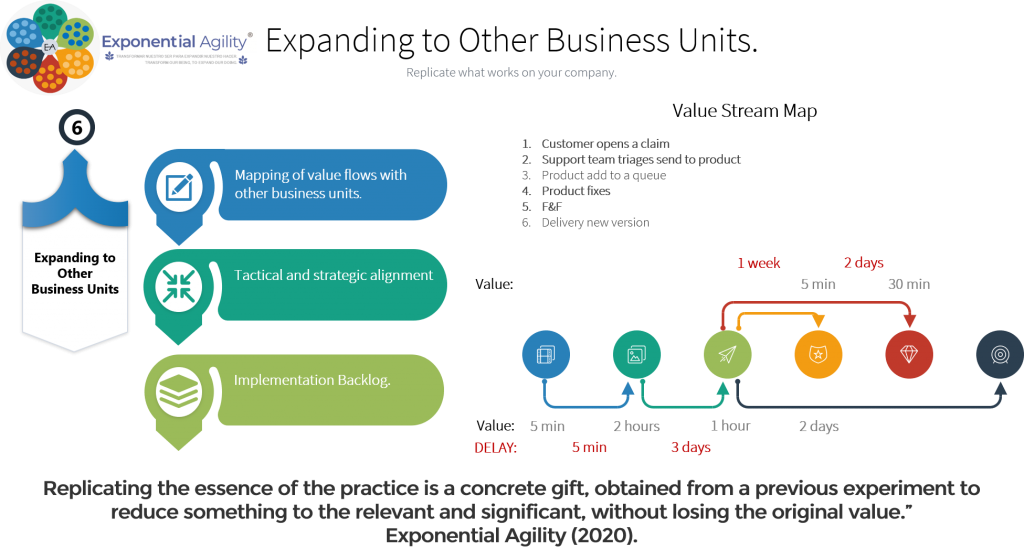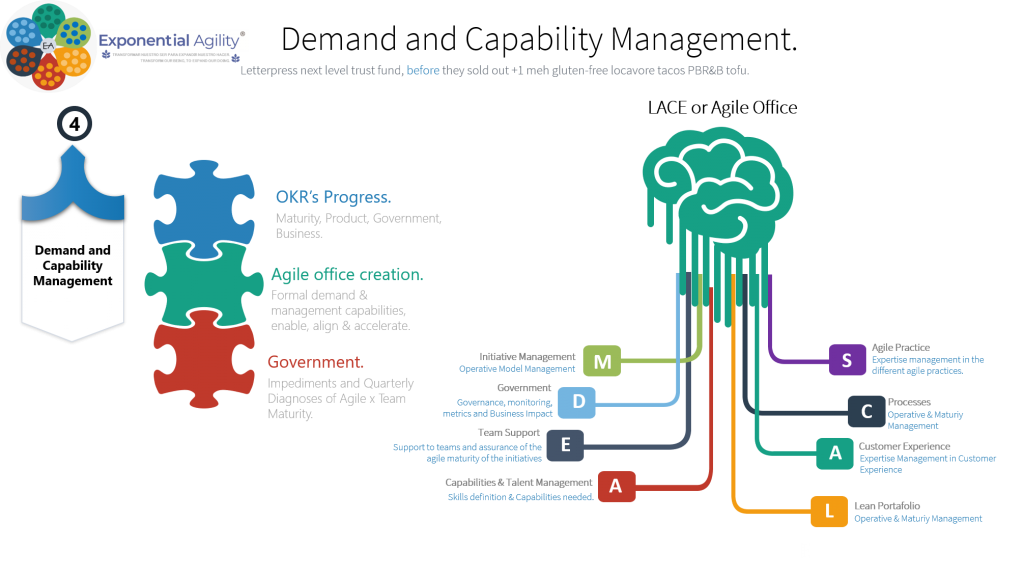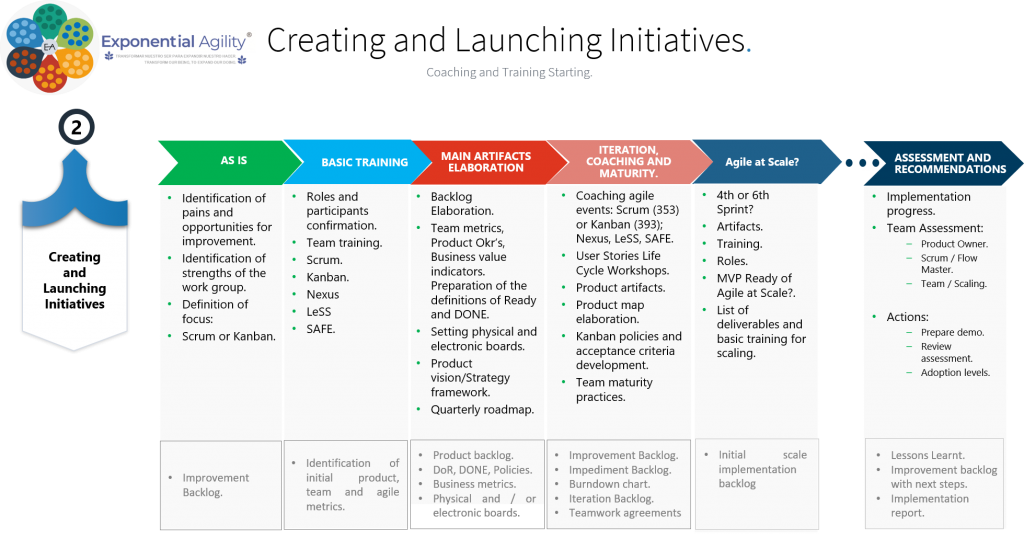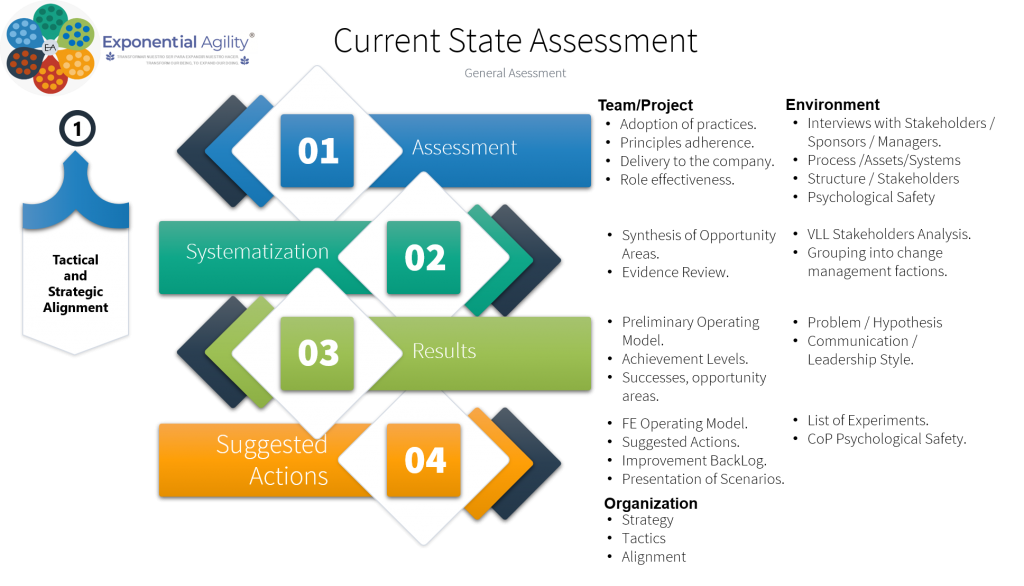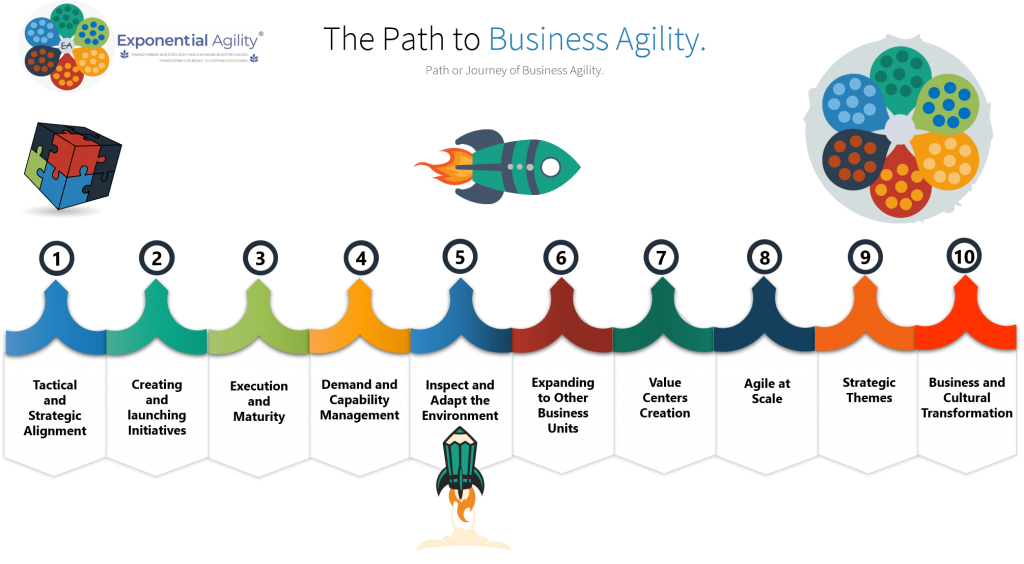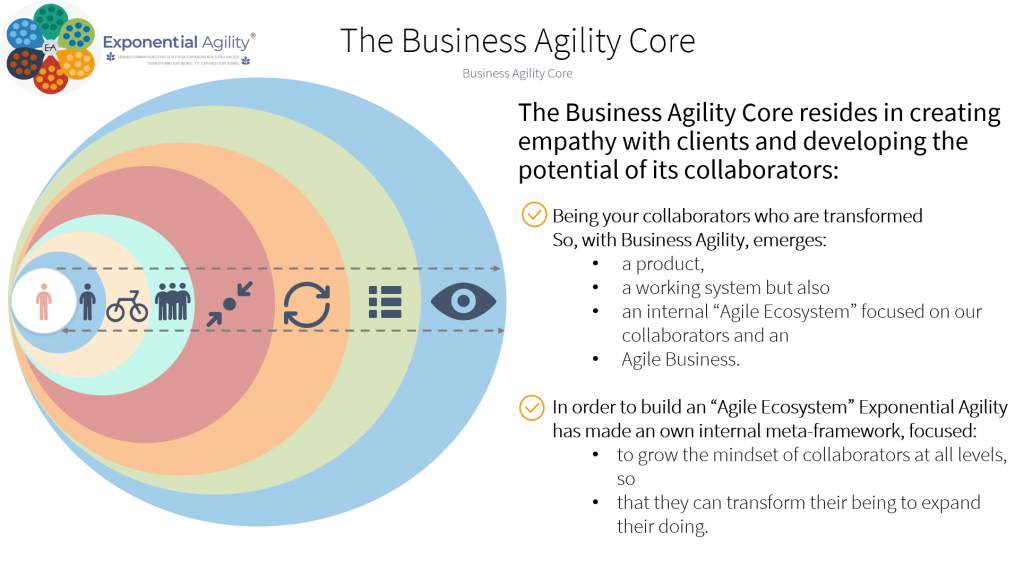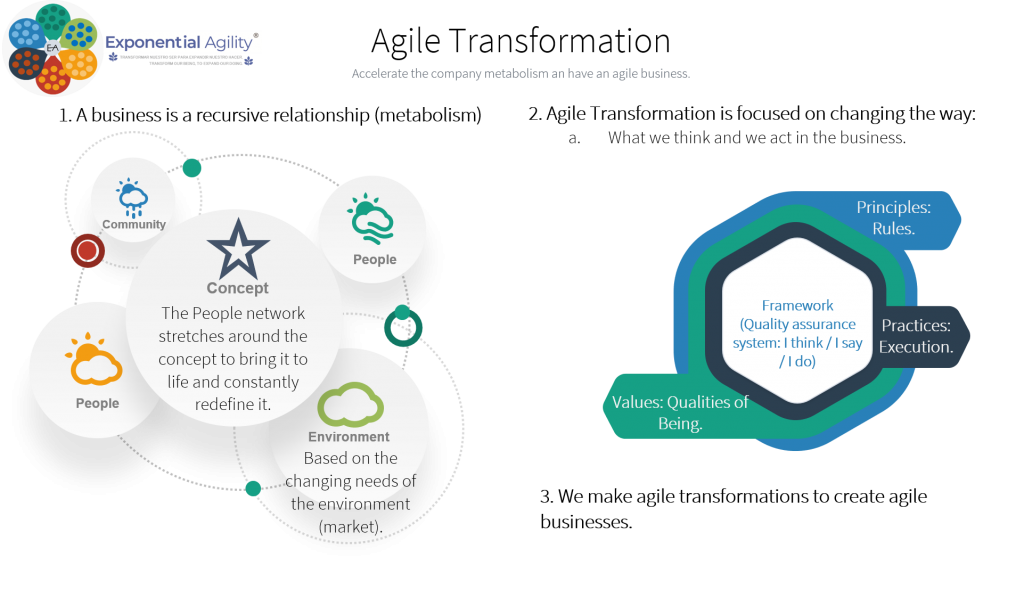In our last capsule we have reviewed the fifth step of our path: “Inspection and adaptation of the environment”.
Now, in this capsule, we will go to the sixth step of our path: the “Extension to other business units”,
When we talk about extensibility to other business units, we must think about all those capabilities that we have built internallym and how we can replicate them, based on the reflection of the context, is it the same? and if they work on it. Our experience here is related to an extensive dictionary of practices that teams master and that have built internally in the organization, in one of the places where we implement a complete transformation, we took on the task of managing these learning domains, both as organizational assets and team competencies, in such a way that at the end of 6 months we had about 50 unique practices that the teams had created, different from the initial ones, of the chosen frameworks, initially based on a maturity approach and mastery (Deyfrus) in the implementation of solutions.
Replicating the essence of the practice is a concrete gift, obtained from a previous experiment to reduce something to the relevant and significant, without losing the original value.”
To extend this agility to other business units, it is important that we carry out a strategic alignment, similar to that carried out in the first step, in order to define the value of this extension and transformation, we will implement everything we have learned and has worked, mapping the value flows of this business units, making a tactical and strategic alignment in order to know the implementation approach from which we can obtain an initial “implementation backlog”, which consists of our “quick wins” as a reference.
That’s all for now, in the next capsule we will go to the sixth step of our path: “Creation of value centers”.

